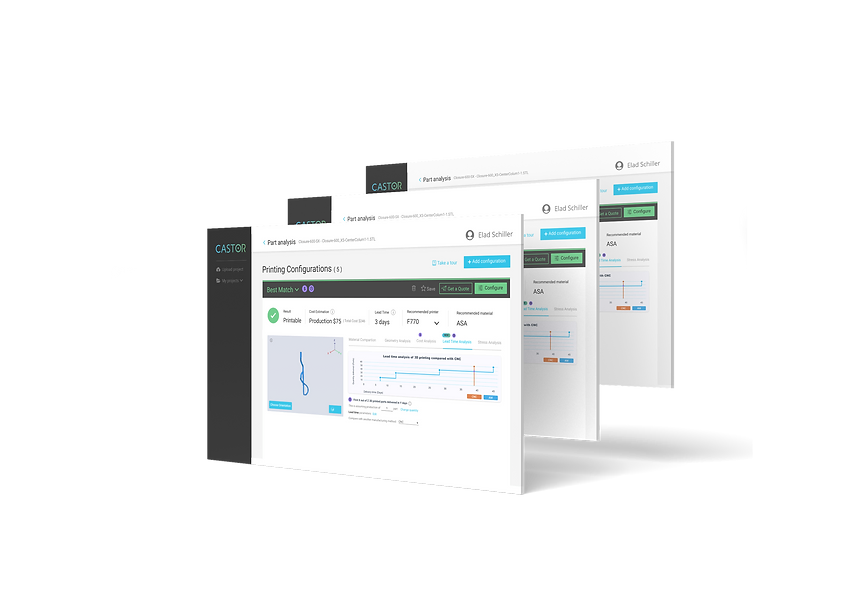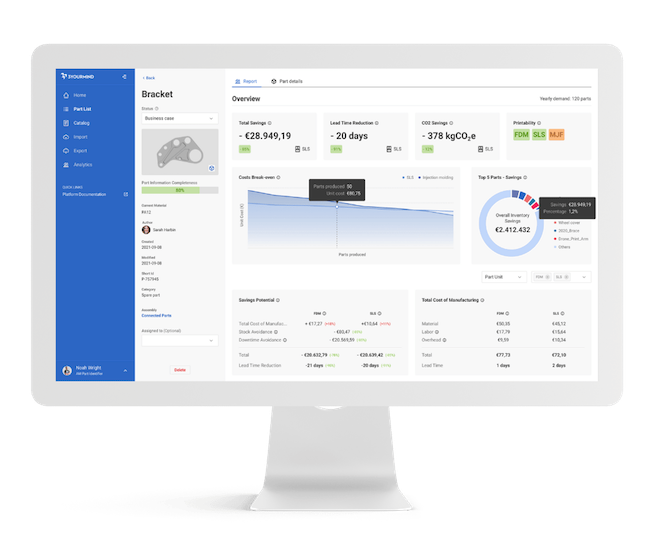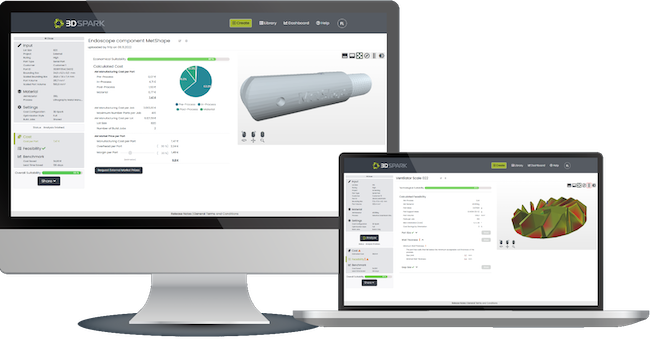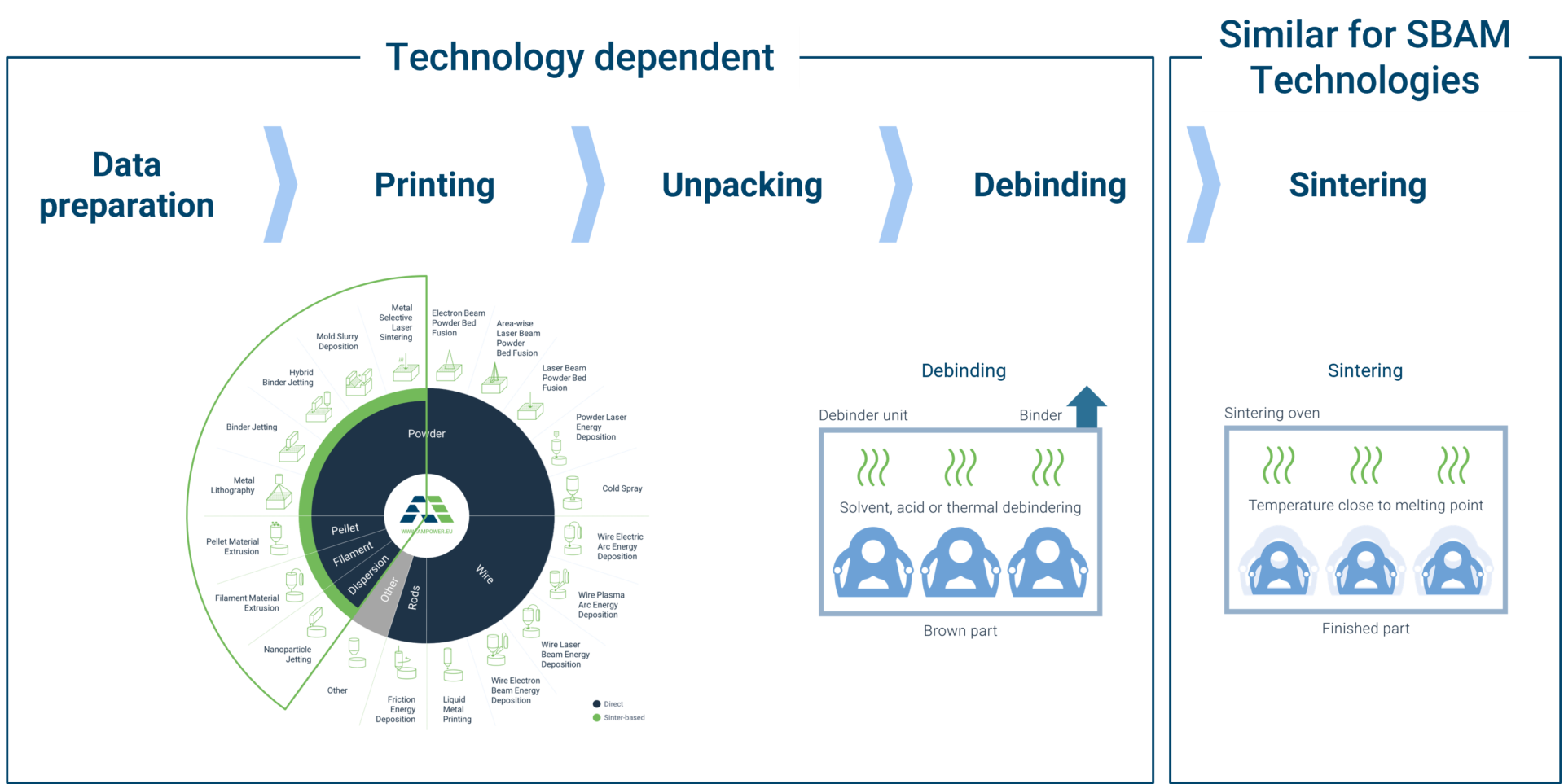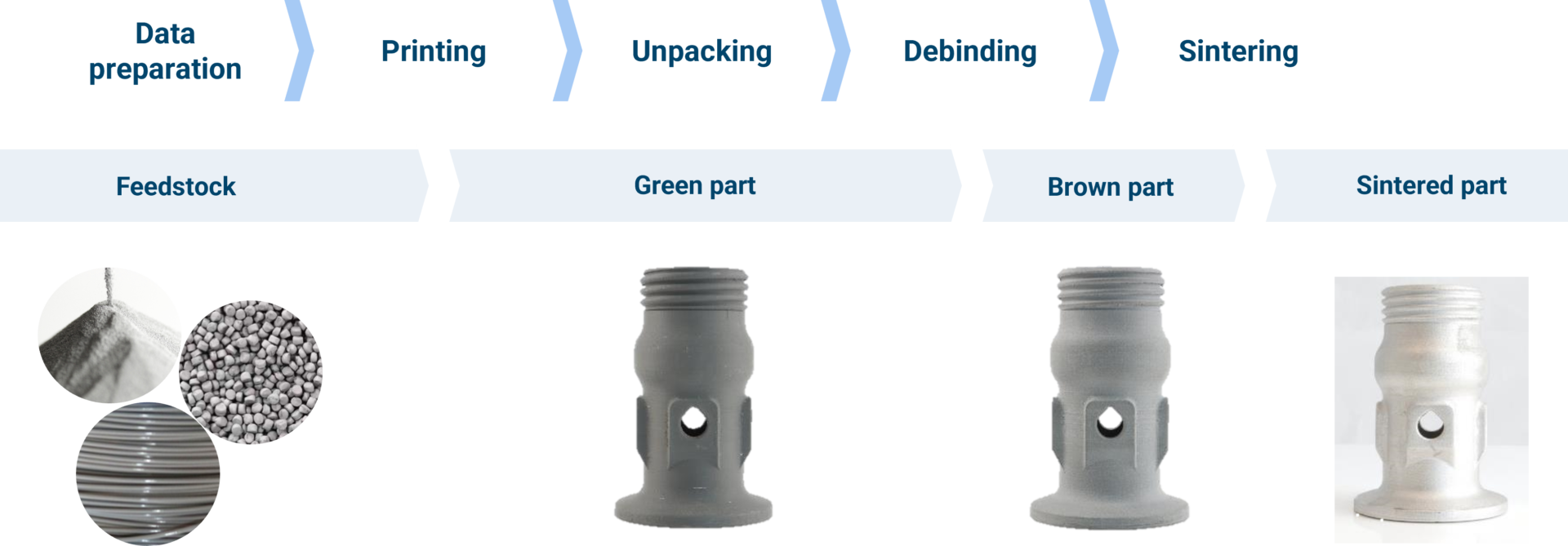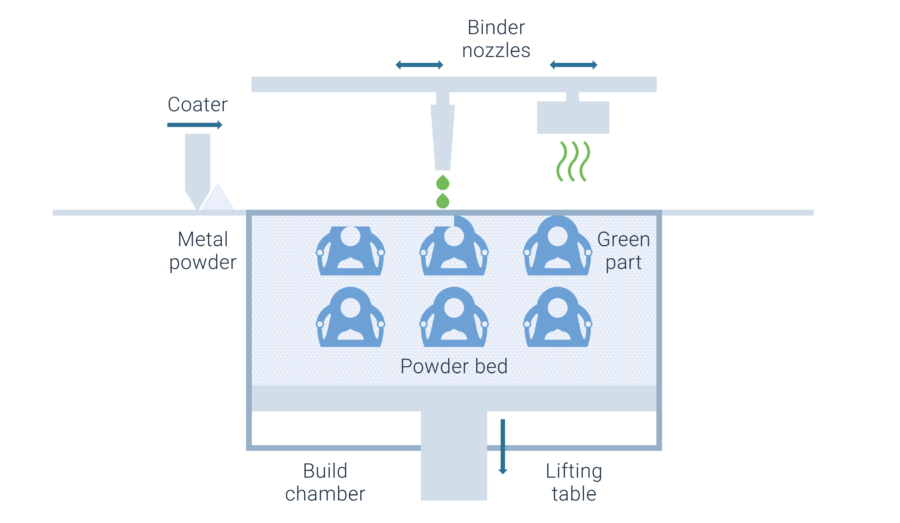Software Tools for Part Identification
Software tools for Part Identification
Software support for the screening of your parts
When trying to identify the right parts for Additive Manufacturing it is easy to get lost in the details. Digital tools highlighted in this section are thus great to support in this process. We still want to highlight the importance of understanding the basics of the technology and the methodology to validate what is suggested by software. Also, while software is great in suggesting the best technology or providing a quick cost estimate, the additional value AM can add to a certain application still needs to be identified “manually” by the end user.
In this section, we want to give an overview of software tools developed by CASTOR, 3YOURMIND and 3D SPARK.
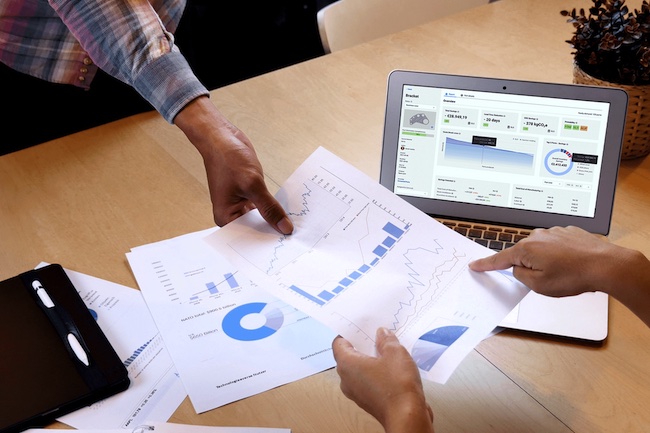
What you will find in this section
CASTOR
CASTOR software overview
CASTOR was founded in 2017 by David Calderon and Omar Elad in Tel Aviv. Since then, their software for automated screening has been continuously developed and is today used by companies such as DANFOSS, STANLEY BLACK & DECKER and EVONIK.
How it works
Users can either upload an entire bill of materials directly from the PLM system to screen a huge number of parts or upload individual CAD assembly files. The software then performs an automatic analysis within a few seconds including the best matching technology, material and a cost estimate.
During this process, an algorithm suggests design adjustments, such as possibilities for weight reduction or part consolidation.
Video
An overview of CASTOR and its functionality can be found in the following video.

By loading the video, you agree to YouTube's privacy policy.
Learn more
3YOURMIND
3YOURMIND software overview
3YOURMIND was founded in 2014 in Berlin and is thus the most mature solution that is presented in this section. Since then the company grew to over 65 employees and has project management offices in Paris, Munich, Novi and San Francisco.
Their customer base includes large enterprises such as VOLKSWAGEN, DEUTSCHE BAHN and CONTINENTAL but also AM companies such as ERPRO or PROTOTEC.
How it works
3YOURMIND offers different approaches including an inventory analysis, which is an automated analysis of the ERP and PLM data, and a use case screening, which is a user-led approach where employees, customers or vendors can enter part information that are then analyzed and can then be assessed by an AM expert.
In the use case screening, users enter key part information such as component size, material and quantity and can upload a 3D file. This data is then analyzed by an algorithm that can be customized based on each company. The user gets initial feedback on the technical and economic suitability of the component and the AM expert within a company can view all screened parts, request more details or define next steps.
What stands out for 3YOURMIND is their broad range of software offering. Besides part identification, which is part of their Agile PLM module, the company offers an Agile ERP and Agile MES solution. This way, 3YOURMIND can cover the entire process from part identification through customer and order management to scheduling and tracking of internal or external part production.
Video
An overview of 3YOURMIND and the use case screening can be found in the following video.

By loading the video, you agree to YouTube's privacy policy.
Learn more
3D SPARK
3D SPARK software overview
3D SPARK is a Hamburg-based company that was founded in 2021 by Ruben Meuth, Dr.-Ing. Fritz Lange and Dr.-Ing. Arnd Struve that all previously worked at the German Fraunhofer Institute IAPT.
Within a short time 3D SPARK has launched their software to the market and has attracted customers like ALSTOM, ZF and METSHAPE.
How it works
Users can upload CAD files, drawing or other documents which are automatically analyzed. The user can then add additional information such as AM material, quantity, make/buy, printing location etc.
Their algorithm then compares different printing orientations for the part regarding cost, quality and lead time and suggests the optimum. For this orientation, a cost analysis breaks down production costs based on a visualized process-chain proposal, to which additional process steps (painting, shipment, etc.) can be added to fine tune the costing. Additionally, the feasibility analysis identifies critical part features, and the break-even analysis suggests the most cost-efficient production method for a certain quantity.
What stands out about 3D SPARK is the precision of their printability check and cost calculation for 11 AM processes. This is based on their orientation optimization algorithm that within seconds analyzes a wide range of different orientations and then selects the optimum, repeatedly saving more than 75% printing costs.
Video
An overview of the 3D SPARK software can be found in the following video.

By loading the video, you agree to YouTube's privacy policy.
Learn more
Free Trial of the 3D SPARK platform
3D SPARK currently offers a free trial to all users of the AMPOWER Academy. To try out their platform, simply register via the following link:
Other companies
Part Identification Software: A Growing Landscape
In addition to the companies highlighted on this page, several others are advancing part identification software for Additive Manufacturing (AM). These include Cognitive Design Systems (CDS) from France, Select AM from Finland, Spare Parts 3D from France, and DIMANEX from the Netherlands. While the functionalities of their tools vary, all provide solutions to evaluate the suitability of parts for AM.
Recently, many of these platforms have also incorporated carbon footprint calculations into their analysis, reflecting the industry’s increasing focus on sustainability.

